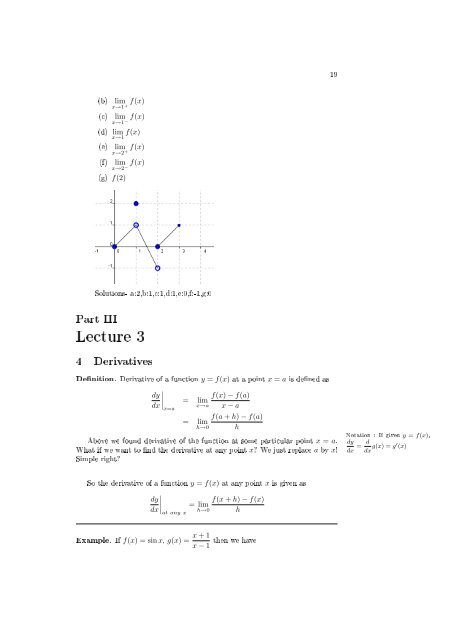Denition approach of learning new topics
Create successful ePaper yourself
Turn your PDF publications into a flip-book with our unique Google optimized e-Paper software.
19<br />
(b) lim x→1 +<br />
(c) lim x→1 −<br />
(d) lim f(x)<br />
x→1<br />
(e) lim f(x)<br />
x→2 +<br />
(f) lim x→2 −<br />
(g) f(2)<br />
Solutions- a:2,b:1,c:1,d:1,e:0,f:-1,g:0<br />
Part III<br />
Lecture 3<br />
4 Derivatives<br />
<strong>Denition</strong>. Derivative <strong>of</strong> a function y = f(x) at a point x = a is dened as<br />
dy<br />
f(x) − f(a)<br />
dx∣ = lim<br />
x→a<br />
x=a<br />
x − a<br />
= lim<br />
h→0<br />
f(a + h) − f(a)<br />
h<br />
Above we found derivative <strong>of</strong> the function at some particular point x = a.<br />
What if we want to nd the derivative at any point x? We just replace a by x!<br />
Simple right?<br />
Notation : If given y = f(x),<br />
dy<br />
dx = d<br />
dx g(x) = g′ (x)<br />
So the derivative <strong>of</strong> a function y = f(x) at any point x is given as<br />
dy<br />
f(x + h) − f(x)<br />
dx∣ = lim<br />
at any x<br />
h→0 h<br />
Example. If f(x) = sin x, g(x) = x + 1<br />
x − 1<br />
then we have



